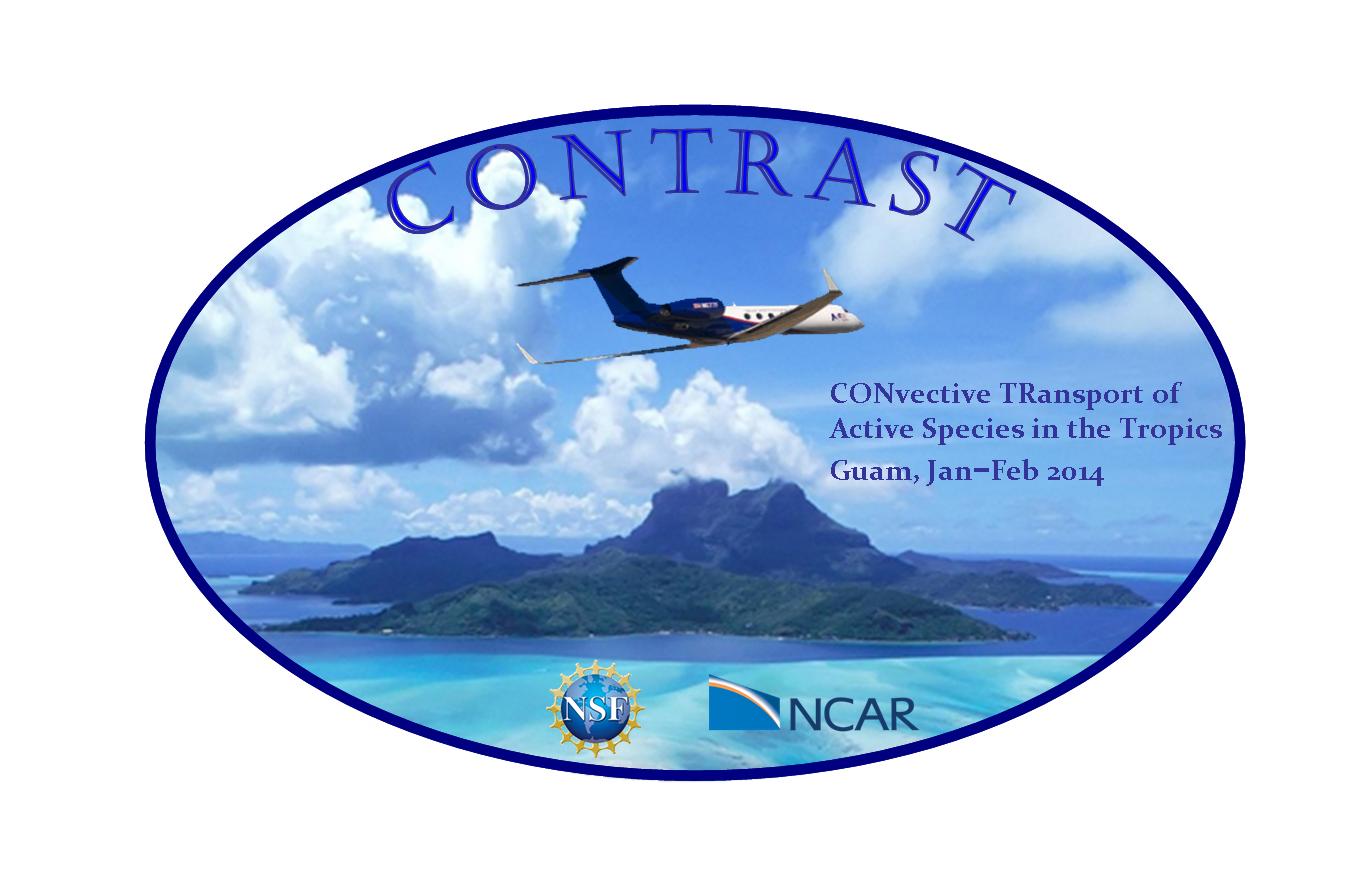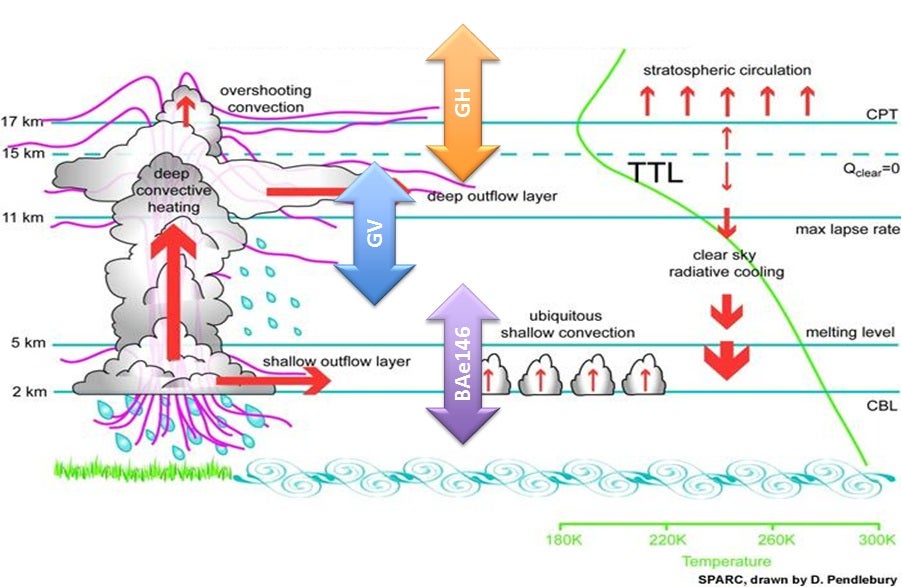CONTRAST: CONvective TRansport of Active Species in the Tropics

Co-PIs: Elliot Atlas (U.Miami); Ross Salawitch (U.Md.); Laura Pan (NCAR)
Location: Guam
Dates: January - February 2014
Scientific Objectives
- Characterize the chemical composition and ozone photochemical budget at the level of convective outflow over the Western Pacific during the deep convective season.
- Evaluate the budget of organic and inorganic bromine and iodine in the TTL.
- Investigate transport pathways from the oceanic surface to the tropopause using the GV coordinated flights with BAe-146 and Global Hawk.
The most extensive deep clouds in the Earth's system develop in the Tropical Western Pacific (TWP) during NH winter. These clouds pack sufficient energy that, on occasion, they punch through the boundary that separates the lowest atmospheric layer (the troposphere) from the overlying stratosphere. As Earth warms, the intensity of tropical convection will increase. The TWP is the nexus between global warming and large-scale changes in atmospheric composition.
Tropical convection rapidly transports air from just above the ocean surface to high altitudes. Scientists have long been interested in the vertical lofting of atmospheric gases produced by ocean organisms and the chemical fate of these compounds as they decompose in the upper troposphere and lower stratosphere. Convection together with chemical processing in the TWP controls the composition of the sub-tropical global troposphere as well as air that enters the lower stratosphere.
CONvective TRansport of Active Species in the Tropics (CONTRAST) will quantify how convection redistributes atmospheric gases in the tropical atmosphere. Observations will be obtained by the NSF/NCAR Gulfstream-V (GV) aircraft from a deployment in Guam during Jan and Feb 2014. The GV will conduct a series of flights dedicated to CONTRAST goals as well as a number of other flights conducted in concert with the high altitude NASA ATTREX Global Hawk (GH) aircraft and the low altitude British CAST BAe-146 aircraft. The BAe-146, GV, and GH will together span the marine boundary layer to the tropical lower stratosphere, providing unprecedented detail on the composition of the tropical atmosphere.
TTL and Convective Transport
